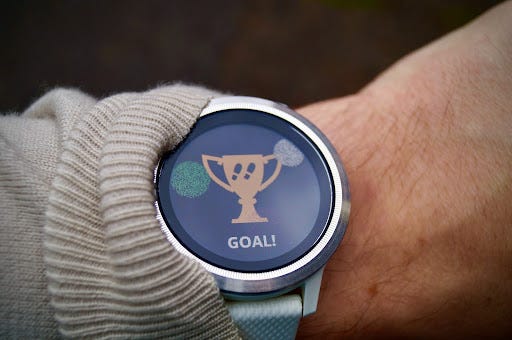How many steps do I really need to reduce mortality risk?
Getting your daily steps in really can make a difference in your life’s longevity. Even better, it’s likely a smaller feat than you may assume.

You may have heard about the magic behind reaching at least 10,000 steps each day. This magic number is popularly promoted by fitness gurus striving to meet a daily challenge, but is this really what it takes to reduce mortality risk? The short answer is no.
What is the real magic number of daily steps I need?
Researchers from the National Institutes of Health found that taking 8,000 steps each day was linked with a 51% reduced risk for all-cause mortality. Additionally, taking 12,000 steps each day was linked with 65% reduced risk, compared to taking only 4,000 steps each day.
This study represented a sample of about 4,800 U.S. adults, aged 40 and older. Across age, gender, and race, research analysts concluded that higher step counts were associated with lower all-cause mortality rates.
What if the standard daily goal is unreasonable for me?
Even though research has largely debunked the popular need to reach 10,000 steps every day to reduce mortality risk, 8,000 daily steps may still seem like a lofty goal. Especially if you are an older adult, you may be naturally less active due to physical changes, lower energy, and/or medical conditions.
More recently in 2023, the JAMA Network Open published revised data indicating that taking at least 8,000 steps for 1 to 2 days each week is necessary to significantly reduce all-cause and cardiovascular mortality of US adults.
The analyzed data revealed that participants who took at least 8,000 steps 1–2 days a week had a lower all-cause mortality risk of 14.9% compared to participants who never reached 8,000 steps in a day. Those who took 8,000 steps 3–7 days a week had a 16.5% reduced mortality risk.
Overall, it’s quite clear that the more daily steps you get in, the more you can reduce your risk of all-cause mortality. This finding simply highlights that you can still gain significant health benefits from hitting this standard step goal only a couple of days each week.
How can I track my steps?
The most accurate way to keep track of your steps is through a wearable fitness device, such as an Apple Watch or FitBit. All your data is accessible right from your wrist, so you can easily check in on your progress as you go throughout your day.
If you don’t have a wearable device, simply holding your smartphone, storing it in your pocket, or securing it to your arm will still track your steps just fine.
Where can my family track my steps?
If your main focus is doing the work to get your daily steps in, you can leave it to your family and/or caretaker to do the tracking.
Most fitness devices offer ways to share your fitness data through their connected apps. However, you’ll still need to maneuver through your app settings to do so.
Need an even easier tracking solution?
Let me introduce you to Karecirc, an up and coming health app designed specifically for family and caretakers to easily track the health data of an older loved one.
As the primary subject, you will wear either an Apple Watch or Fitbit as the minimum requirement to start tracking your daily activity. Then, you’ll create a Karecircle on the app, which invites any family, friends, or caretakers to join and have access to all of your health data.
Not only can your Karecircle track your daily steps, but members can also keep track of your heart rate, blood pressure, oxygen levels, and more. All of this data can be reviewed on daily, weekly, and monthly comparison charts, to give the best overview of your health progression.
All there’s left to do is get stepping!
If you are interested in this topic, please follow us here, and Facebook and Instagram. We are a startup focused on enabling caregivers to manage the conditions of their loved ones and help them to lead healthy lives. You can also visit us https://karecirc.com for the latest updates on our Android and iOS apps which are meant to harness the power of wearable technology for senior health.
For additional reading:
